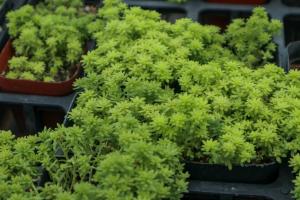Introduction
Mangrove trees are important coastal vegetation that provide numerous benefits to both aquatic and terrestrial ecosystems. They are the first line of defense against coastal erosion, and they serve as nurseries and habitats for a variety of fish, invertebrates, and wild bird species. In this article, we will outline the steps for planting mangrove trees and share some tips for ensuring they thrive.
Step 1: Choose the Right Site
The first step in planting mangrove trees is to select a suitable site. Mangroves perform best in areas with sandy, muddy, or loamy soil and salinity levels between 30 and 60 parts per thousand. They also require plenty of sunlight and protection from strong winds and waves. When choosing a site, consider factors such as topography, drainage, and exposure to the elements.
Step 2: Prepare the Site
Once you have identified a suitable site, it’s time to prepare the area for planting. Start by removing any existing vegetation or debris from the planting area. Then, dig a hole that is deep and wide enough to accommodate the root system of the mangrove seedling. The hole should be at least twice as wide as the root system of the seedling.
Step 3: Plant the Seedling
Before planting the seedling, soak it in water for several minutes. This will help to ensure that the root system is properly hydrated. Then, place the seedling in the hole and fill it with soil, being careful not to cover the trunk of the tree. Tamp down the soil around the root system to eliminate any air pockets.
Step 4: Provide Adequate Watering
After planting, it’s important to provide adequate watering to the mangrove seedling. Mangroves thrive in moist soil conditions, and they require plenty of water to grow properly. However, they should not be planted in waterlogged soil, as this can hinder their growth.
Step 5: Monitor Growth and Maintenance
Finally, it’s important to monitor the growth of the mangrove tree and provide any necessary maintenance. This may include pruning dead or damaged branches, removing any competing vegetation, and regularly checking soil moisture levels.
Tips for Successful Mangrove Planting
Here are some additional tips to consider when planting mangrove trees:
Choose a reputable nursery or supplier for your mangrove seedlings.
Avoid planting non-native mangrove species, as these can have negative impacts on local ecosystems.
Plant mangroves during the rainy season, as this will provide natural watering.
Consider planting mangroves in groups rather than individually, as this can provide greater protection against erosion.
Conclusion
Planting mangrove trees requires careful consideration of a variety of factors, from site selection to watering and maintenance. By following the steps outlined in this article, and keeping our tips in mind, you can help ensure the success of your mangrove planting project and contribute to the health of local ecosystems.

 how many times do yo...
how many times do yo... how many planted tre...
how many planted tre... how many pine trees ...
how many pine trees ... how many pecan trees...
how many pecan trees... how many plants comp...
how many plants comp... how many plants can ...
how many plants can ... how many plants and ...
how many plants and ... how many pepper plan...
how many pepper plan...































